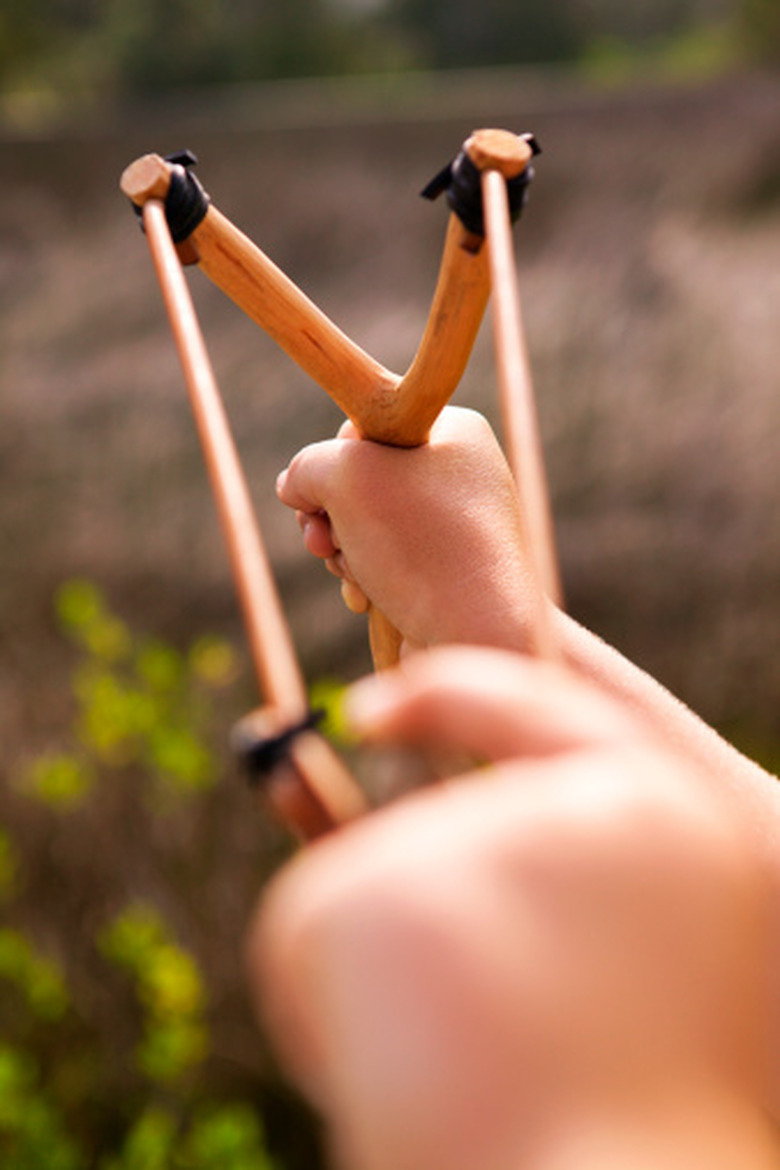What Simple Machines Are Used In The Trebuchet?
Physicists recognize six types of simple machines: levers, pulleys, screws, wheel and axle systems, wedges and inclined planes. A simple machine is any simple device that makes work easier, such as the wedge-end of a nail, which is easier to hammer into a board than the flat end. Depending on the trebuchet type, it may use anywhere from two to six simple machines.
What Is a Trebuchet?
What Is a Trebuchet?
A trebuchet is a type of catapult, which is a device that can hurl an object much farther than a human can thrown it. The first documentation of trebuchet use dates to second century China, though catapults have been around for some time prior to the Roman Empire. Trebuchets are best-known for their role in castle attacks during the medieval period: The attacking army could position it far enough from the castle that archers couldn't hit them, and they could hurl practically anything over the walls.
Lever
Lever
The primary component of a trebuchet is a Type-1 lever — the same type of lever as a see-saw. On one end of the lever, called the "load arm," the trebuchet operator secures the object that he wants to hurl. This end of the lever is tied down to the base; on the other end, the "force arm," the operator hoists a large weight. When the operator releases the tie-down holding the load-arm, the weight falls rapidly, sending the load arm flying rapidly upward and hurtling the object when it reaches the vertical position.
Wheel and Axle or Pulley
Wheel and Axle or Pulley
To hoist the weight on the force arm of the lever, the operator must use a simple machine such as a pulley or a wheel and axle system. A pulley is actually a form of a wheel and axle system, but both systems allow the operator to lift a heavy weight much more easily than he could by simply using his own two hands. While the operator does the same amount of work, these simple machines allow him to perform the work over a longer distance, thus requiring less exertion, or force, and making it feel easier. Trebuchets could launch stones of up to 300 pounds, but this would require a counterweight of almost 2,000 pounds, which required using a lot of pulleys.
Screws or Wedges
Screws or Wedges
Most trebuchets are held together with screws or nails, which are a type of wedge. Trebuchets are almost universally constructed out of wood, and while a small trebuchet science project may hold together with glue, a larger model requires a more solidly fastened frame. Both wedges and screws are actually forms of inclined planes. A nail's inclined plane works to separate the material, then holds it fast with the friction of its shaft. A screw is an inclined plane wrapped in a spiral, which converts rotational force into linear force and holds objects in place with its ridges.
References
Cite This Article
MLA
Gronot, Amanda. "What Simple Machines Are Used In The Trebuchet?" sciencing.com, https://www.sciencing.com/simple-machines-used-trebuchet-8009921/. 24 April 2017.
APA
Gronot, Amanda. (2017, April 24). What Simple Machines Are Used In The Trebuchet?. sciencing.com. Retrieved from https://www.sciencing.com/simple-machines-used-trebuchet-8009921/
Chicago
Gronot, Amanda. What Simple Machines Are Used In The Trebuchet? last modified March 24, 2022. https://www.sciencing.com/simple-machines-used-trebuchet-8009921/
